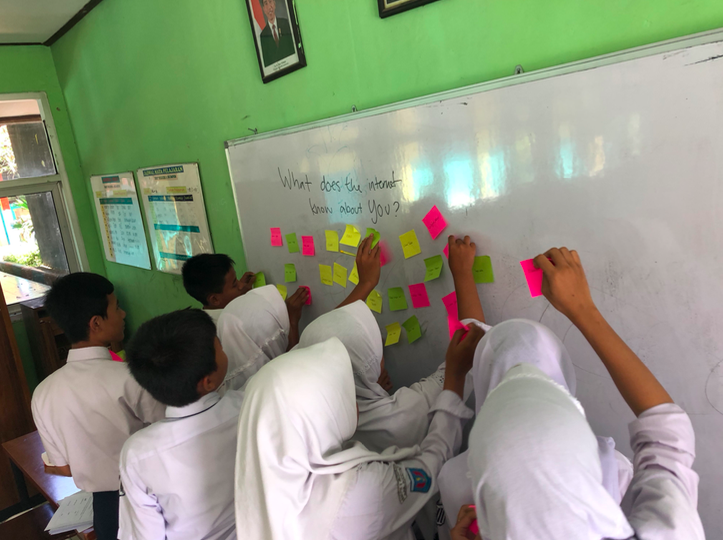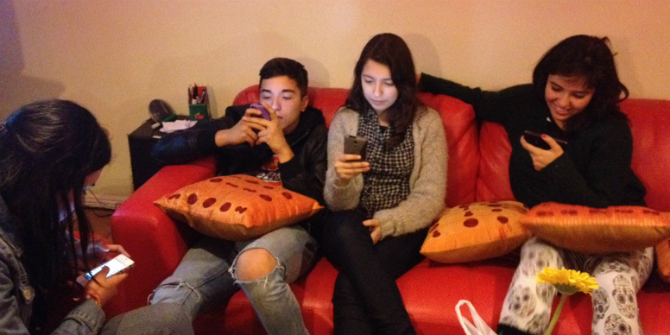 Schools have an important role to play in young people’s social and emotional development, as well as their academic learning. Yet, in spite of recent policy reforms and government investment in mental health and wellbeing programmes, schools’ responsibilities are only loosely defined when it comes to the digital world. So why the inertia, and what more can be done? For www.parenting.digital, Laurie Day discusses the findings from a new report on Teachers’ and schools’ interactions with students about their online lives outlining the struggles of schools to keep up with their students’ sophisticated internet use, to grasp the scale and breadth of online risks and opportunities, and to align digital education and welfare.
Schools have an important role to play in young people’s social and emotional development, as well as their academic learning. Yet, in spite of recent policy reforms and government investment in mental health and wellbeing programmes, schools’ responsibilities are only loosely defined when it comes to the digital world. So why the inertia, and what more can be done? For www.parenting.digital, Laurie Day discusses the findings from a new report on Teachers’ and schools’ interactions with students about their online lives outlining the struggles of schools to keep up with their students’ sophisticated internet use, to grasp the scale and breadth of online risks and opportunities, and to align digital education and welfare.
Schools on the cusp – no turning back
Rewind to the first lockdown, and schools were at various stages of shifting their operations online. By coincidence, fieldwork was getting underway for a study examining how schools engage with students about the digital world.
This was not originally intended as a COVID-19 piece. It came from earlier work on wellbeing interventions in schools, where we had noticed a recurring theme: “what to do about the digital question?” Schools were putting in place counselling, mentoring and links to clinical teams, but students’ online lives were the one place where professionals could not go. This blind spot was a source of much anxiety. How risky was it delivering peer support for wellbeing online, when staff weren’t there to supervise? How could schools safeguard something that they couldn’t see?
With these issues in mind, we wanted to take a step back and re-examine schools’ work in the digital space carrying out qualitative research within mainstream, independent and special schools, and Alternative Provision (AP) providers in England during summer 2020. From mobile phone policies to internet safety education and welfare, we aimed to better understand how teachers’ attitudes and beliefs informed the approaches they took towards student and parental engagement.
In the event, the timing gave the study a new dimension, as teachers reflected on the COVID-19 watershed and the significance of the digital turn for schools.
School systems and the digital world
The interviews were a reminder of teachers’ unique viewpoint on students’ evolving online lives throughout the secondary school phase. From incoming cohorts at year 7 to school leavers at post-16, teachers held valuable insights to how mobile phones and the internet overlap with school life. This ranged from subject teaching to pastoral relationships, and accidental over-sharing of information by students.
But it was also clear that schools had a partial view. Teachers knew that students filtered what they were willing to share. By years 9 and 10, students had often become more guarded and sophisticated in their internet use, requiring classroom management and safeguarding strategies to match. Adding to this, internet-related topics tended to arise in ways that were hard to predict, meaning that knowledge was dispersed between subject teachers, pastoral managers, and safeguarding teams. This made it hard for schools to hold the full picture.
Tech is involved in every aspect of our lives now, from mental health to education and training… I am teaching to the 2030 job market and beyond, but I’m not future-proofed enough to know what that is… it’s not part of CPD in schools, but it needs to be. (Assistant principal)
Then there was the knowledge and skills gap. Teachers differed in their views on the educational value of students’ online lives. There were also wide variations in teachers’ personal use of the internet and social media, and their confidence in using different platforms and apps. Even the most tech-aware staff were daunted by the pace with which students’ media lives were changing. At the same time, they could see the potential benefits of the digital world as a source of advice, information, and self-help – from citizenship to wellbeing and academic study.
These issues had been amplified by the COVID-19 situation. For some schools, the online interactions with parents and carers during lockdown had adjusted home-school communication in positive ways and established a new spirit of collaboration. In others, the crisis had highlighted gaps and inequalities in access to learning and discontinuities in professional support.
These wellbeing conversations [during lockdown] have raised issues around families not having enough money or food… or concerns about parental mental health and wellbeing. In some instances, this has re-set relationships with parents and helped to undo the negative connotations of school. (Assistant headteacher)
For all schools within the study, there was a realisation that ‘digital’ was now the lingua franca, and educational and leisure contexts could no longer be treated as two entirely separate dimensions of young people’s internet use.
From problematisation to possibility – what can be done?
Despite the challenges, the report gives much cause for optimism. The findings reinforce that schools already have considerable knowledge at their disposal and that practical steps can be followed to foster student and parental engagement in digital contexts without creating over-dependence on external expertise.
The schools within the study reported having experienced greater success where a number of foundations had been laid. This included where they:
- Projected a strong vision for all things digital at a ‘whole school’ level, which came from the top, and was integrated throughout – from internet safety education, to IT subject teaching, PSHE curricula, and wellbeing initiatives.
- Created a school culture and environment that supported conversations between students and staff about the internet, based on sharing of real-world examples, rather than off-the-shelf delivery of internet safety topics.
- Recognised students as experts in their online lives, and the rightful co-architects of any digital strategy aiming to promote their learning and wellbeing.
- Kept channels of home-school communication open, modelling positive uses of mobile phones to engage with parents, while avoiding a sole focus on ‘problem’ online behaviours.
The next phase of the #FOOTPRINTS project will involve the co-production and testing of a framework and toolkit with teachers, students, and parents and carers to decide what kinds of digital futures they aspire towards and how to achieve this.
Informing policy and practice
The report offers-up a set of recommendations, the first of which relate to action at a policy level:
- It makes a case for strengthening the digital aspect of mental health and wellbeing programmes for schools, through the ongoing rollout of designated leads for mental health, and mental health support teams.
- It also calls for digital aspects of student wellbeing to receive sufficient attention within the school inspection framework, and self-evaluation practices.
- It asks questions of whether current arrangements for teacher education and CPD are adequately preparing teachers for the range of ways in which the digital world intersects with the life and work of schools.
Schools and teachers each had their default view of the role and value of the internet, but the juxtaposition was one of the most fascinating aspects of the study. So much of what was taken as given reflected the specific ways in which schools have embedded their internet safety education and PSHE curricula over time. So many of the professional views towards risk encountered within the study were based on conjecture. Schools almost universally lacked a sense of the scale and breadth of online risks and opportunities that were specific to their student population. They would benefit so much in sharing and learning from each other in this respect.
Many of the promising examples came from special school settings, where the closer alignment of education and welfare offered real advantages in making these conversations part of everyday practice. Similarly within the AP providers, life skills, personal development and wellbeing featured prominently within the school timetable, allowing for a more holistic treatment of young people’s online lives. The blind spot remains a challenge, now more than ever schools need to rethink digital for a post-COVID world, but the potential solutions are within their grasp.
First published at www.parenting.digital, this post gives the views of the authors and does not represent the position of the LSE Parenting for a Digital Future blog, nor of the London School of Economics and Political Science.
You are free to republish the text of this article under Creative Commons licence crediting www.parenting.digital and the author of the piece. Please note that images are not included in this blanket licence.
Featured image: Shutterstock, 2020





